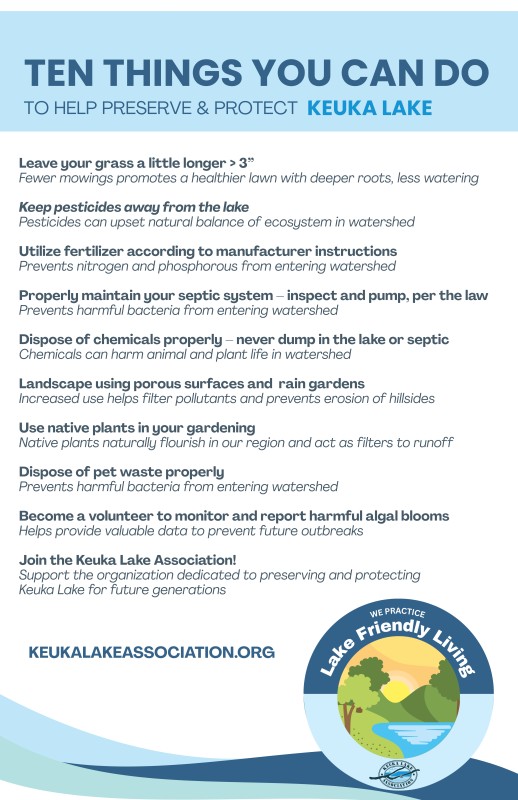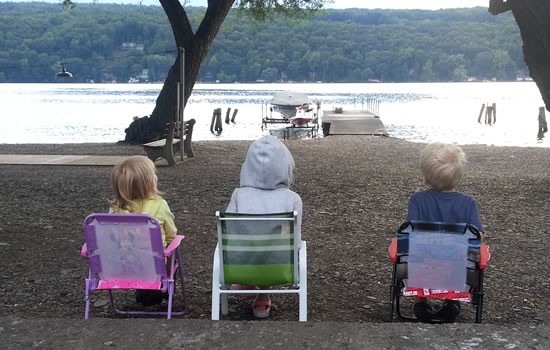― INTRODUCTION ―
Water is a precious resource. Without it, life could not exist. Water is used for everyday functions, including drinking, cooking, bathing and many forms of work and play. As water is so important for everyday life, it follows that we must help protect and preserve our largest water resource: Keuka Lake and the watershed that surrounds it.
A watershed is the area of land that drains into a receiving water body. Keuka Lake is the receiving water body for 110,000 surrounding acres. The lake is influenced by water running off the land in the watershed and therefore, by the human activities that take place in the watershed. Chemicals, bacteria and sediments are carried to the lake from the watershed. Pollutants such as these, that originate from general land use activities and having no well-defined point of entry are referred to as non-point source pollution.
Residents in the Keuka Lake watershed rely on Keuka Lake and groundwater for drinking water and recreation. While some regulations are in place to protect our water resources, it is largely up to individuals and organizations to pay attention to their activities and ensure that their day-to-day activities do not contribute to non-point source pollution that degrade water quality. Your use of the "best management practices" described in this book will help protect the future and quality of Keuka lake.
We must also recognize that water does not abide by political boundaries. Numerous municipalities make up the Keuka Lake watershed and it is vital that we work together as towns, villages, and counties to adopt policies that will help maintain water quality. One way to help protect the lake is to join or work with the Keuka Lake Association which sponsors several programs devoted to protecting Keuka lake.
Residents can also make a contribution by getting involved in local government. This may range from attending meetings to voice opinions about issues affecting the watershed to running for elected office. We will be most successful in protecting our water-resources through careful stewardship of our land and water.
This book is intended to provide information on what watershed residents can do to help protect water quality. This book contains some "best management practices" that you can use as well as some general information about living in the Keuka Lake watershed. Also provided is a list of resources and contacts for those wishing for more information about these subjects.


